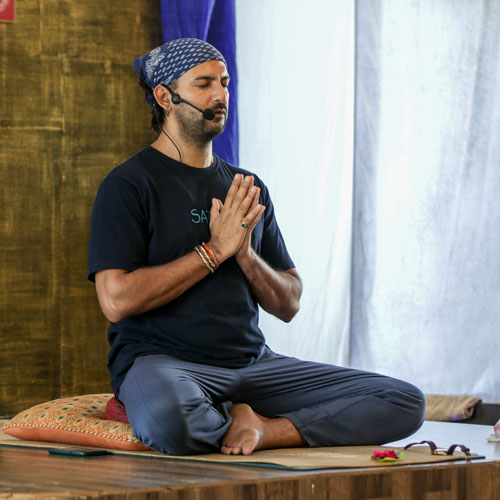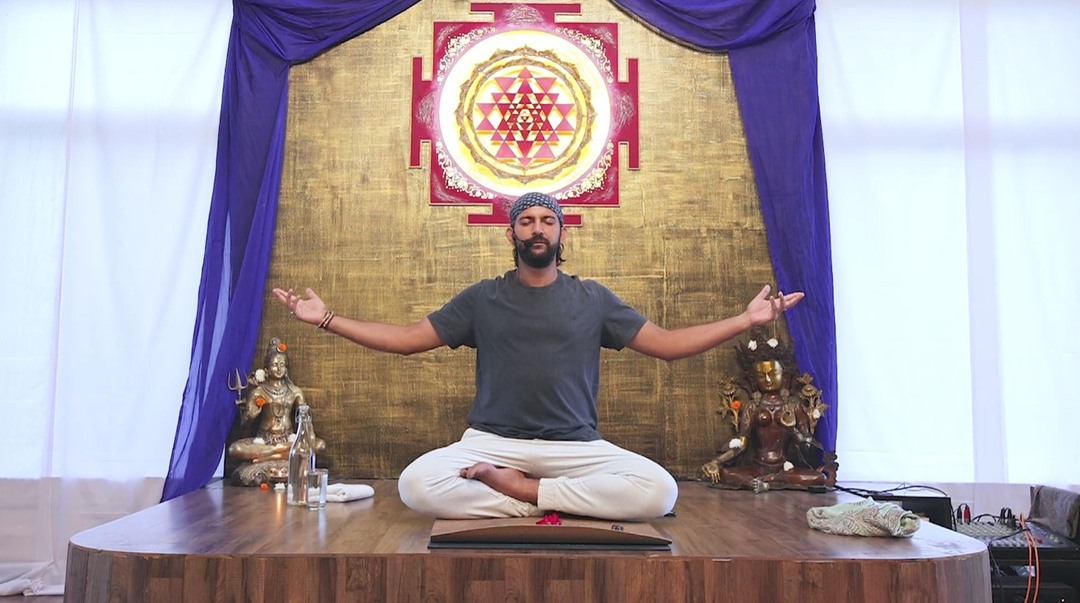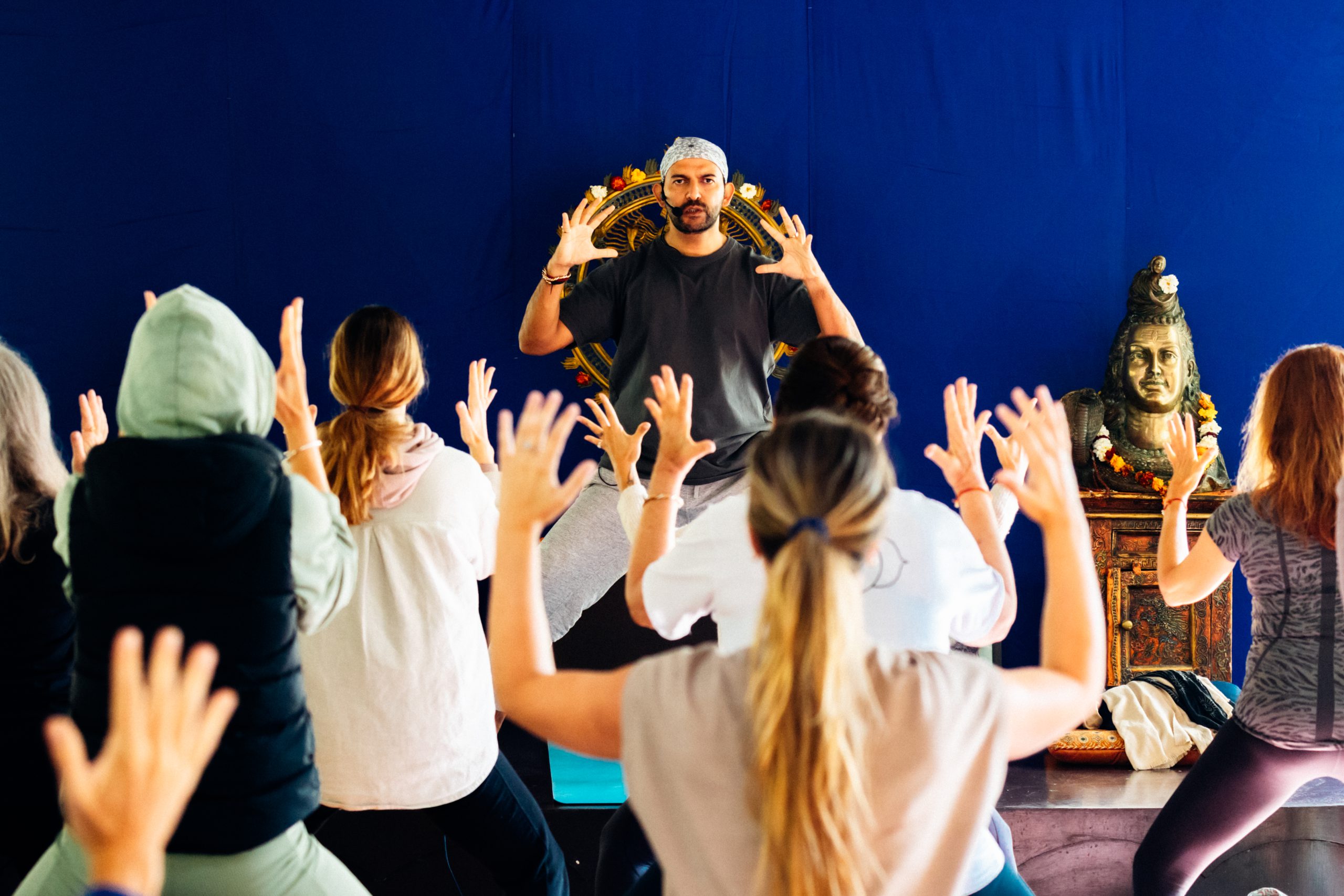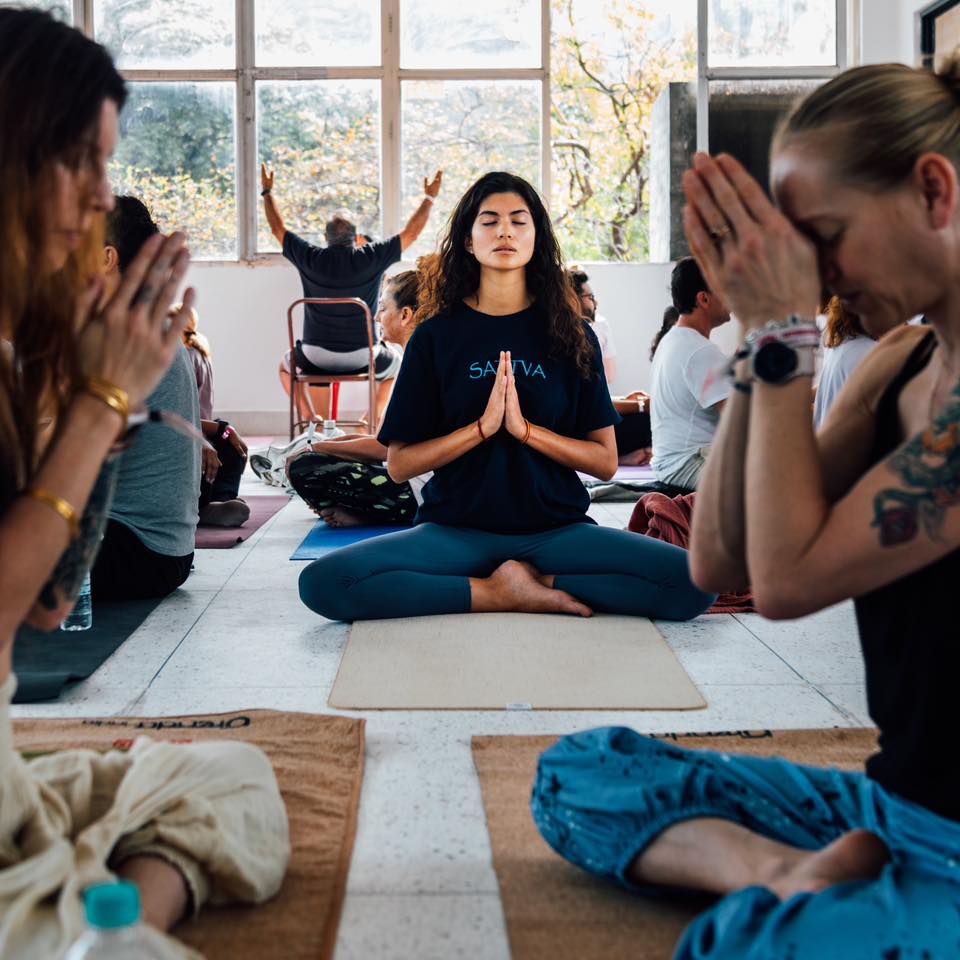Introduction
Online Yoga Teacher Training is becoming increasingly popular as more people seek flexible and accessible ways to gain their certification. This trend is driven by the convenience of learning from home and the ability to balance training with other responsibilities. However, maintaining motivation and discipline in a self-paced learning environment can be challenging. Without the structure of a traditional classroom, it’s easy to procrastinate or lose focus.
Staying motivated and disciplined is crucial for success in online yoga teacher training. It requires a strong commitment and effective strategies to keep progressing. When motivation wanes, and distractions arise, having a clear plan and set goals can make all the difference.
Understanding Your “Why”
Personal Motivations:
Why did you choose Online Yoga Teacher Training? Maybe you love yoga and want to teach others. Perhaps you want to deepen your practice. You might be looking for a flexible job that fits your lifestyle. Think about what drives you.
Identifying Your Core Reasons:
Journaling: Write down why you chose Online Yoga Teacher Training. Reflect on your yoga experiences and how they changed you.
Meditation: Spend a few minutes each day thinking about your motivations. Focus on the feelings and thoughts that come up.
Talk to Others: Discuss with fellow yoga students or teachers. Their stories can inspire you and help you understand your own reasons.
Creating a Vision Board
Gather Materials: Collect magazines, printouts, or any visual materials that inspire you.
Visualize Your Goals: Think about what you want from your Online Yoga Teacher Training. Find images of yoga poses, inspiring quotes, or peaceful yoga settings.
Create Your Board: Arrange these images and words on a board. Place it somewhere you’ll see it every day.
Crafting a Personal Mission Statement
How to Create a Personal Mission Statement
Start by thinking about your core values and goals. Ask yourself:
What do I want to achieve with my Online Yoga Teacher Training?
How do I want to impact others through yoga?
What values do I want to embody as a yoga teacher?
Write down your thoughts. Keep your sentences short and meaningful. Use active voice to make your statement powerful and clear.
Using Your Mission Statement as a Daily Reminder
Daily Affirmation: Start your day by reading your mission statement aloud. This sets a positive tone for the day.
Reflection: At the end of the day, reflect on how you lived your mission statement. Did your actions align with your goals of achieving Online Yoga Teacher Training?
Motivational Tool: Use your mission statement to stay focused during tough times. When you feel discouraged, reading your mission statement can reignite your passion.
Designing a Personalized Learning Plan

Steps to Create a Customized Study and Practice Schedule
Assess Your Current Schedule: Look at your daily routine. Identify free time slots for study and practice.
Set Clear Goals: Define what you want to achieve each week. This could include completing specific modules or mastering certain poses.
Allocate Time Slots: Divide your available time into dedicated slots for yoga practice, studying theory, and self-reflection. Make sure to include breaks.
Use a Planner: Write down your schedule in a planner or calendar app. This helps you stay on track and see your progress.
Stay Consistent: Stick to your schedule as much as possible. Consistency is key to making steady progress in your Online Yoga Teacher Training.
Balancing Yoga Practice, Theoretical Learning, and Self-Reflection
Yoga Practice: Dedicate specific time slots to physical practice. Include a mix of asanas, pranayama, and meditation.
Theoretical Learning: Set aside time for studying yoga philosophy, anatomy, and teaching techniques. Use varied resources like books, videos, and online courses.
Self-Reflection: Incorporate moments for self-reflection. This could be through journaling or quiet meditation. Reflect on your progress and any challenges you face in your Online Yoga Teacher Training.
Adjusting Your Plan to Accommodate Life’s Unpredictabilities
Be Realistic: Understand that some days will be busier than others. Don’t be too hard on yourself if you miss a session of your Online Yoga Teacher Training.
Prioritize Tasks: On busy days, focus on high-priority tasks. This could mean doing a shorter practice or quick review of study notes.
Adjust Timelines: If you fall behind, adjust your goals and timelines. It’s better to progress slowly than to rush and miss key learnings.
Stay Positive: Keep a positive mindset. Remind yourself of your “why” and stay motivated.
Cultivating a Growth Mindset
Importance of Adopting a Growth Mindset in Online Learning
In online learning, challenges are common. You might face technical issues, distractions at home, or self-doubt. A growth mindset helps you view these challenges as opportunities to grow rather than as setbacks. This positive outlook keeps you motivated and persistent, which is essential for completing your Online Yoga Teacher Training successfully.
Techniques for Overcoming Self-Doubt and Embracing Challenges
Positive Affirmations: Start each day with positive affirmations. Remind yourself of your strengths and capabilities.
Set Small Goals: Break down your larger goals into smaller, manageable tasks. Achieving these smaller goals boosts your confidence and builds momentum.
Embrace Mistakes: View mistakes as learning opportunities. When you encounter a difficult pose or concept, see it as a chance to improve rather than a failure.
Seek Feedback: Ask for feedback from your instructors and peers. Constructive criticism helps you identify areas for improvement and shows you’re committed to growth.
Practice Self-Compassion: Be kind to yourself. Everyone faces challenges. Acknowledge your efforts and progress, no matter how small.
Integrating Mindfulness into Your Routine

Practicing Mindfulness to Enhance Focus and Reduce Stress
Mindfulness means being fully present in the moment. When you practice mindfulness, you pay attention to your thoughts, feelings, and surroundings without judgment which makes it easier to stay on track with your Online Yoga Teacher Training.
Stress can be a significant barrier to learning. When you feel overwhelmed, it’s hard to concentrate. By incorporating mindfulness into your routine, you create a peaceful learning environment that supports your goals.
Daily Mindfulness Exercises Specifically for Online Learners
Mindful Breathing: Start your day with 5-10 minutes of mindful breathing. Sit comfortably, close your eyes, and focus on your breath. Inhale deeply through your nose, hold for a few seconds, and exhale slowly through your mouth. This simple practice helps clear your mind and prepare you for the day ahead.
Body Scan Meditation: Take a few minutes to perform a body scan meditation. Lie down or sit comfortably. Close your eyes and slowly bring your attention to each part of your body, starting from your toes and moving up to your head. Notice any tension or discomfort and breathe into those areas to release it.
Mindful Study Breaks: During study sessions, take short mindfulness breaks. Pause for a few minutes to stretch, breathe deeply, or simply sit quietly and observe your surroundings. These breaks help refresh your mind and maintain your focus.
Gratitude Journaling: At the end of the day, write down three things you’re grateful for. This practice shifts your focus to positive aspects of your life and training, reducing stress and enhancing overall well-being.
Benefits of Mindful Breathing and Meditation Practices in Staying Disciplined
Improved Focus: Mindful breathing and meditation help you concentrate better. When your mind is calm, you can focus more effectively on your Online Yoga Teacher Training.course and practice.
Reduced Stress: These practices lower stress levels, making it easier to handle the demands of your training. When stress is reduced, you can maintain a steady and disciplined approach.
Enhanced Self-Awareness: Mindfulness increases self-awareness, helping you recognize when you’re distracted or stressed. This awareness allows you to address these issues promptly and stay on track.
Increased Patience: Regular mindfulness practice cultivates patience, essential for learning and mastering new skills in yoga.
Leveraging Accountability Partners and Mentors
Finding and Working with an Accountability Partner
Identify Potential Partners: Look for someone with similar goals in your Online Yoga Teacher Training program. This could be a fellow student or someone you know who is also pursuing yoga training.
Reach Out: Contact potential partners and discuss the idea of working together. Explain how mutual support can benefit both of you.
Set Clear Expectations: Agree on how often you’ll check in with each other. This could be daily, weekly, or bi-weekly. Define the goals you want to achieve and how you’ll hold each other accountable.
Communicate Regularly: Regular communication is key. Share your progress, challenges, and successes of your Online Yoga Teacher Training. Encourage and motivate each other to stay on track.
Building a Support System through Online Mentors and Peer Groups
Seek Online Mentors: Look for experienced yoga teachers who offer mentorship programs. Many online yoga platforms provide access to mentors who can guide you through your Online Yoga Teacher Training.
Join Peer Groups: Participate in online forums, social media groups, or virtual study groups related to your Online Yoga Teacher Training. Engaging with peers helps you share experiences, ask questions, and gain new insights.
Engage in Group Activities: Join group activities like virtual yoga classes, workshops, or discussion sessions. These interactions build a sense of community and provide additional learning opportunities.
Regular Check-ins and Progress Discussions to Maintain Motivation
Schedule Regular Check-ins: Set specific times for check-ins with your accountability partner, mentors, or peer group. Consistent check-ins help you stay focused and on track on your Online Yoga Teacher Training.
Discuss Progress and Challenges: During check-ins, discuss your progress and any challenges you’re facing. Share what’s working well and areas where you need support in your Online Yoga Teacher Training.
Set Short-term Goals: Break down your long-term goals into short-term, achievable targets. This makes your training more manageable and keeps you motivated.
Celebrate Achievements: Acknowledge and celebrate your accomplishments, no matter how small of your Online Yoga Teacher Training. Recognizing your progress boosts your confidence and motivation.
Embracing Technology with Purpose
Using Technology Tools and Apps to Enhance Learning Without Distractions
- Yoga Apps: Apps like Down Dog, Yoga Studio, and Glo offer guided classes and pose libraries. These resources help you practice and learn new techniques.
- Study Apps: Use apps like Quizlet for flashcards or Evernote for note-taking. These apps help organize your study materials and enhance your learning.
- Time Management Tools: Apps like Todoist and Trello help you manage your time and tasks. They keep you organized and ensure you stay on track with your Online Yoga Teacher Training schedule.
Setting Digital Boundaries to Avoid Burnout
Setting Digital Boundaries to Avoid Burnout
Designate Tech-Free Times: Set specific times each day when you disconnect from all devices. Use this time for mindfulness, meditation, or outdoor activities.
Limit Screen Time: Allocate a specific amount of time for your Online Yoga Teacher Training and stick to it. Use apps like Screen Time or Digital Wellbeing to monitor and limit your screen usage.
Create a Dedicated Study Space: Have a designated area for your online learning that is free from distractions. This helps create a clear boundary between study time and personal time.
Exploring Online Platforms for Additional Resources and Community Support
Online Yoga Communities: Join forums and social media groups dedicated to yoga. Websites like Yoga Alliance and Yoga Journal have active communities where you can connect with fellow trainees and experienced teachers.
Educational Platforms: Use platforms like Coursera or Udemy to find courses on yoga philosophy, anatomy, and teaching techniques. These resources complement your Online Yoga Teacher Training.
Webinars and Workshops: Participate in online webinars and workshops. These events offer opportunities to learn from experts and interact with other yoga enthusiasts.
Celebrating Micro-Achievements
Recognizing and Celebrating Small Wins to Build Momentum
Track Your Progress: Keep a journal or use an app to note down your achievements. Whether it’s mastering a new pose, completing a module, or sticking to your schedule, write it down.
Celebrate Immediately: Don’t wait to celebrate. Acknowledge your accomplishment as soon as it happens. This immediate recognition reinforces the positive behavior that led to the win.
Share Your Success: Tell your accountability partner, mentor, or peer group about your achievement. Sharing your success can motivate you and inspire others in their Online Yoga Teacher Training journey.
Creating a Reward System that Reinforces Positive Behavior
Set Clear Criteria: Define what constitutes a micro-achievement. This could be daily practice, completing a reading assignment, or attending a live session.
Choose Meaningful Rewards: Pick rewards that are meaningful and enjoyable. These could be small treats like a favorite snack, a relaxing bath, or a short break to do something you love.
Stay Consistent: Apply the reward system consistently. Make sure to reward yourself every time you achieve a predefined milestone. Consistency helps reinforce positive behavior.
Reflecting on Progress Regularly to Stay Motivated
Weekly Reviews: Set aside time each week to review your progress. Look at what you’ve achieved and identify areas for improvement.
Adjust Your Goals: Based on your reflections, adjust your goals if necessary. Setting new, achievable targets keeps your Online Yoga Teacher Training dynamic and engaging.
Celebrate Reflectively: Use your reflection time to celebrate your achievements. Reflect on the hard work and dedication that led to your successes.
Incorporating Creative Expression

Using Creative Activities to Complement Your Yoga Practice
Journaling: Write about your daily yoga practice, what you learn, and how you feel. Reflecting through writing helps you process and internalize your experiences.
Drawing: Sketch yoga poses, sequences, or mandalas. Drawing helps you visualize concepts and can be a relaxing activity after practice.
Music: Create playlists that inspire your practice. You can also explore playing instruments or singing as a way to connect with the rhythm and flow of yoga.
How Creative Expression Can Aid in Understanding and Retaining Concepts
Visual Learning: Drawing or creating visual aids helps you remember complex poses and sequences. Visual representations can make abstract concepts easier to grasp.
Emotional Connection: Creative activities help you connect emotionally with what you’re learning. This emotional engagement makes the information stick better.
Active Participation: Engaging in creative tasks requires active participation, which reinforces learning. It moves you beyond passive reading or watching videos to actively creating and internalizing knowledge.
Sharing Creative Projects with the Online Yoga Community
Social Media: Post your drawings, journal entries, or music on platforms like Instagram, Facebook, or Pinterest. Use hashtags related to yoga and your Online Yoga Teacher Training to reach a wider audience.
Online Forums: Join yoga forums and share your creative work. Engage in discussions and seek constructive feedback from peers.
Virtual Meetups: Participate in virtual meetups or classes where you can showcase your creative projects. These events provide real-time interaction and immediate feedback.
Practicing Self-Compassion and Resilience
The Importance of Being Kind to Yourself During the Learning Process
Reduces Stress: Being kind to yourself reduces stress and anxiety. It helps you stay calm and focused during challenging times.
Enhances Learning: Self-compassion creates a positive learning environment. When you’re not harsh on yourself, you’re more open to making mistakes and learning from them.
Boosts Motivation: Encouraging yourself fosters a growth mindset. It boosts your motivation to keep going, even when the training gets tough.
Techniques for Building Resilience in the Face of Setbacks
Positive Self-Talk: Replace negative thoughts with positive affirmations. For example, instead of saying, “I can’t do this,” say, “I’m learning and improving every day.”
Mindfulness Practices: Engage in mindfulness practices like meditation or deep breathing. These techniques help you stay present and manage stress.
Set Realistic Goals: Set achievable goals and celebrate small wins. This approach builds confidence and resilience over time.
Learn from Failures: View setbacks as learning opportunities. Reflect on what went wrong and how you can improve next time.
Developing a Routine of Self-Care that Supports Long-Term Discipline and Motivation
Daily Yoga Practice: Incorporate a daily yoga practice that includes asanas, pranayama, and meditation. This routine keeps your body and mind balanced.
Healthy Eating: Eat a balanced diet to nourish your body. Proper nutrition fuels your practice and study sessions.
Adequate Rest: Ensure you get enough sleep and take regular breaks. Rest is crucial for recovery and maintaining focus.
Engage in Hobbies: Spend time on hobbies and activities you enjoy. This helps you relax and recharge.
Conclusion
In conclusion, staying motivated and disciplined during your online yoga teacher training can significantly enhance your learning experience and personal growth. We’ve explored several unique strategies tailored to this digital format that can help you navigate challenges effectively.
Setting clear goals from the outset allows you to maintain focus throughout the training. Whether it’s mastering specific poses, deepening your understanding of yoga philosophy, or preparing for teaching assessments, defining these objectives provides a roadmap for your progress.
Establishing a consistent practice schedule fosters discipline. Treat your online yoga teacher training sessions as non-negotiable appointments with yourself, dedicating time daily or weekly to engage fully with the coursework and practice sessions.
Leveraging online resources such as forums, webinars, and interactive sessions keeps you engaged with the broader yoga community and provides ongoing support. Engaging in discussions, seeking mentorship from instructors, and connecting with fellow trainees can enrich your learning journey.
Maintaining a balanced lifestyle outside of training is crucial. Prioritize self-care, adequate rest, and nutrition to sustain your energy levels and mental clarity throughout the program.


